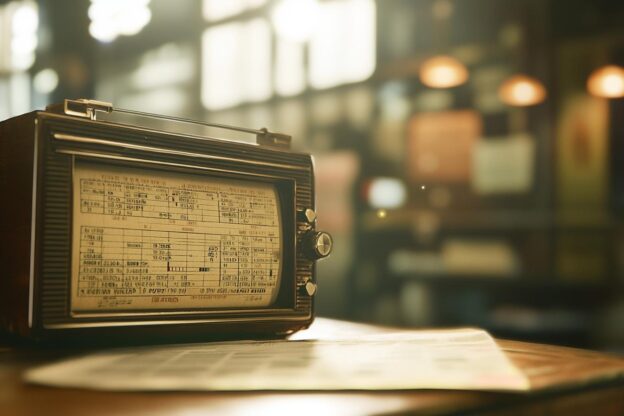Classical music radio features offer a unique and engaging way to explore the world of classical music. Whether you’re a seasoned aficionado or a curious newcomer, these features can deepen your appreciation for the genre. From in-depth composer biographies and insightful analyses of specific pieces to interviews with renowned musicians and discussions about the historical context of classical music, these features provide a multifaceted perspective. Have you ever wondered what inspired Mozart to write his iconic operas? Or perhaps you’re curious about the evolution of the symphony over the centuries? Classical music radio features delve into these questions and more, offering a captivating journey through the rich tapestry of classical music.
Beyond their educational value, classical music radio features create a sense of community among listeners. These features often include listener call-ins and discussions, fostering a shared appreciation for the music. Imagine listening to a program about Beethoven’s Fifth Symphony, then hearing other listeners share their personal interpretations and experiences with the piece. This kind of interaction adds an extra layer of depth and meaning to the listening experience, creating a sense of shared discovery. In essence, classical music radio features not only educate and inform but also connect listeners through a common love for this timeless art form.

Classical Music Radio Features
1. Classical Music Radio Features
Classical music radio features are a vital part of the listening experience, offering listeners a deeper understanding and appreciation of the music. These features can take many forms, from in-depth interviews with composers and performers to insightful discussions about specific pieces or musical periods. They often delve into the historical context of the music, exploring the lives and influences of the creators. Additionally, these features might present fascinating stories behind the composition or performance of a piece, giving listeners a more intimate connection to the music.
Another key element of classical music radio features is the exploration of different musical styles and genres within the classical tradition. Hosts may introduce listeners to lesser-known composers or periods, broadening their musical horizons. They might also delve into specific musical techniques or instruments, providing a greater appreciation for the complexity and artistry involved. Ultimately, these features aim to enrich the listening experience, inspiring listeners to discover new favorites and deepen their understanding of the vast world of classical music.
2. Program Formats eg thematic chronological
Radio stations often structure their classical music programming around specific formats to enhance the listening experience. One popular format is thematic, where programs focus on a particular theme, composer, or era. For example, a station might dedicate an evening to the works of Mozart, showcasing his operas, symphonies, and concertos. This allows listeners to delve deeper into a specific aspect of classical music and gain a better understanding of its nuances.
Another common format is chronological, where programs trace the evolution of classical music through time. This could involve a journey through the Baroque period, exploring the works of Bach, Handel, and Vivaldi, or a focus on the Romantic era, highlighting the contributions of Beethoven, Schubert, and Brahms. Chronological programs provide a framework for understanding the development of classical music and the influences that shaped its various styles.
3. HostLed Discussions Interviews
Host-led discussions and interviews are engaging ways to bring classical music to life on the radio. These segments allow listeners to hear insightful conversations about composers, performances, and musical trends. A skilled host can guide the discussion, asking thought-provoking questions and drawing out fascinating perspectives from guests. These segments can feature experts, performers, or even passionate listeners, creating a dynamic and informative experience for the audience.
The key to successful host-led discussions and interviews lies in creating a comfortable and engaging atmosphere. The host should be knowledgeable about classical music and able to connect with guests and listeners alike. A good host will encourage open dialogue, allowing guests to share their unique insights and experiences. Whether exploring the intricacies of a specific composition or discussing the impact of a particular conductor, these segments offer a valuable opportunity to deepen listeners’ understanding and appreciation of classical music.
4. Music Discovery Education
Classical music radio stations play a vital role in music discovery and education. They offer a curated selection of music, introducing listeners to composers, eras, and genres they may not have encountered before. This exposure helps listeners develop an appreciation for the rich and diverse world of classical music. In addition to playing familiar pieces, many stations feature in-depth interviews with performers and experts, providing valuable insights into the musical context and the creative process.
Beyond providing access to music, radio stations also actively engage listeners through educational programs. These programs often explore specific composers, musical movements, or historical periods. Some stations also offer interactive features like quizzes and online resources, further enhancing the learning experience. By fostering a sense of discovery and exploration, classical music radio stations inspire a lifelong love of music and encourage listeners to delve deeper into the world of classical music.
5. Live Performances Recordings
Live performances of classical music offer a unique and powerful experience. The energy of the musicians and the audience combines to create a vibrant atmosphere that can’t be replicated in a recording. You can feel the passion and dedication of the performers as they bring the music to life. The imperfections that might be edited out of a recording become part of the beauty of the live performance. The acoustics of the venue add another layer of depth and richness to the sound.
Recordings, on the other hand, allow you to experience classical music at any time and in any place. They provide a high-quality and consistent representation of the music. You can listen to your favorite pieces repeatedly and discover new works from the comfort of your own home. Moreover, recordings provide access to a vast range of music, from famous masterpieces to lesser-known gems. Both live performances and recordings offer valuable ways to engage with classical music.
6. Audience Interaction Engagement
Audience interaction is a vital element in engaging listeners with classical music radio. Incorporating interactive features, such as live polls and quizzes, can spark curiosity and encourage participation. By inviting listeners to share their thoughts and preferences, you can create a sense of community and foster a deeper connection to the music. This can also lead to valuable insights into listener interests and preferences, guiding programming decisions and content selection.
Creating an engaging atmosphere for listeners is crucial. This can be achieved by encouraging listeners to share their thoughts and feelings about the music, both on-air and through social media platforms. Listeners can also be encouraged to submit requests, share their musical discoveries, or participate in special events. These activities foster a more personal connection between listeners and the station, enhancing the overall listening experience.
Conclusions
So, there you have it! Classical music radio is more than just a bunch of fancy tunes. It’s a vibrant world where you can explore different styles, hear insightful discussions, and even learn a thing or two about music history. From thematic programs to live performances, there’s something for everyone, no matter your level of musical knowledge. The best part? You can actively participate! Whether you’re sharing your thoughts online or tuning in to a host-led discussion, classical music radio encourages you to be part of the journey.
So, if you’re curious about this world of beautiful sounds, give classical music radio a try. You might just discover your new favorite composer, or maybe even fall in love with the entire genre!


















